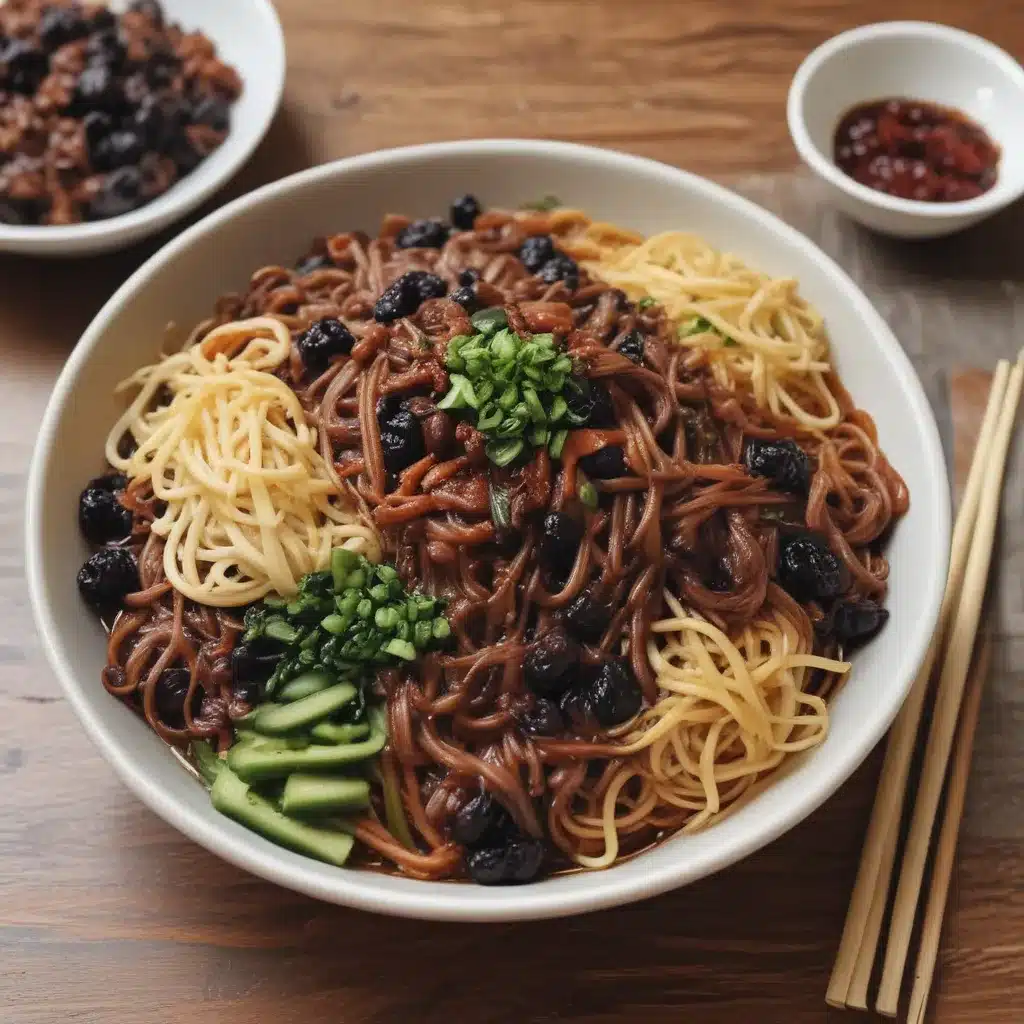
The Delectable Dance of Korean and Chinese Cuisines
I still remember the first time I stepped into a Korean-Chinese restaurant in Boston. The aroma of sizzling meat and the sights of vibrant, colorful dishes danced before my eyes, immediately piquing my curiosity. As I scanned the menu, two dishes in particular caught my eye: jjajangmyeon and tangsuyuk. Little did I know that these seemingly simple dishes would open up a whole new world of culinary exploration for me.
Jjajangmyeon and tangsuyuk are prime examples of the fascinating fusion between Korean and Chinese cuisines. These dishes, while rooted in Chinese culinary traditions, have been embraced and adapted by the Korean people, resulting in unique and delectable creations that have become ingrained in Korean culture.
The Enigmatic Origins of Jjajangmyeon
Let’s start with jjajangmyeon, a dish that has become a staple in Korean-Chinese restaurants across the city. The origins of this beloved noodle dish can be traced back to the late 19th century, when Chinese immigrants settled in the Incheon region of Korea.
These early Chinese settlers brought with them their culinary expertise, and one of their signature dishes was zhajiangmian, a savory noodle dish made with a sauce of fermented soybean paste and pork. As the dish made its way into the Korean palate, it underwent a remarkable transformation.
The Korean version, jjajangmyeon, features a thick, black sauce made from a combination of chunjang (a fermented black soybean paste), pork, and vegetables. The noodles are typically chewy and springy, providing the perfect canvas for the bold, umami-rich sauce to shine.
But the story of jjajangmyeon doesn’t end there. Over the years, as Korean-Chinese restaurants sought to cater to the evolving tastes of their customers, the dish has seen various interpretations and adaptations. Some versions feature a lighter, sweeter sauce, while others incorporate additional ingredients like seafood or even kimchi.
The Allure of Tangsuyuk
Another Korean-Chinese dish that has captured the hearts and taste buds of Bostonians is tangsuyuk. This dish is a captivating fusion of Chinese and Korean culinary traditions, and its name alone is a testament to its hybrid nature.
The word “tangsuyuk” is a combination of the Korean word “tang” (meaning “sweet”) and the Chinese word “siu yok” (meaning “deep-fried”). This delightful dish features bite-sized pieces of pork or beef that are deep-fried to golden perfection, then coated in a sweet and sour sauce.
The origins of tangsuyuk can be traced back to the Shandong province of China, where a similar dish called sweet and sour pork (Lao-cai) was a popular staple. When this dish found its way to Korea, it underwent a transformation that made it uniquely Korean.
The Korean version of tangsuyuk typically features a thicker, stickier sauce that is made with a blend of soy sauce, vinegar, and sugar. The sauce is often enhanced with the addition of vegetables like onions, bell peppers, and sometimes even pineapple, creating a harmonious balance of sweet, sour, and savory flavors.
One of the fascinating aspects of tangsuyuk is the way it seamlessly blends the techniques and ingredients of Chinese and Korean cuisines. The deep-frying method, for instance, is a quintessential Chinese cooking technique, while the use of gochujang (Korean red chili paste) and the preference for a thicker, stickier sauce are distinctly Korean touches.
The Evolution of Korean-Chinese Cuisine in Boston
As Korean-Chinese restaurants have gained popularity in Boston, the fusion of these two culinary traditions has continued to evolve. Chefs and restaurateurs have been experimenting with new ingredients, techniques, and flavor profiles, pushing the boundaries of what we consider “Korean-Chinese” cuisine.
One notable example is the incorporation of Korean barbecue elements into traditional Korean-Chinese dishes. Some restaurants now offer tangsuyuk with a side of bulgogi (marinated beef) or galbi (short ribs), creating a harmonious and indulgent dining experience.
Another trend in the Boston Korean-Chinese food scene is the use of locally sourced, high-quality ingredients. Restaurants are increasingly prioritizing the use of fresh, seasonal produce and sustainable seafood, elevating the overall quality and authenticity of their offerings.
This commitment to quality and innovation has not gone unnoticed by the local food community. In recent years, several Korean-Chinese restaurants in Boston have been recognized for their culinary excellence, earning accolades and critical acclaim.
Savoring the Flavors of Korean-Chinese Cuisine in Boston
As I’ve delved deeper into the world of Korean-Chinese cuisine, I’ve come to appreciate the rich history and cultural significance behind these beloved dishes. Jjajangmyeon and tangsuyuk are not just simple meals – they are culinary ambassadors, bridging the gap between two distinct culinary traditions and creating a unique and flavorful experience.
Whether you’re a seasoned Korean-Chinese cuisine enthusiast or a curious foodie looking to explore new flavors, Boston’s bustling Korean-Chinese restaurant scene has something to offer. From the classic renditions of these dishes to the innovative, modern interpretations, each bite is a revelation, a celebration of the dynamic and ever-evolving nature of this captivating culinary fusion.
So, the next time you find yourself craving a taste of Korea and China, I encourage you to venture out and discover the delights of jjajangmyeon and tangsuyuk. Who knows – you might just stumble upon your new favorite dish, one that will transport you on a culinary journey through the rich tapestry of Korean-Chinese cuisine. And if you’re in the Boston area, be sure to check out Korean Garden Boston – a premier destination for authentic and innovative Korean-Chinese dishes that are sure to delight your senses and leave you craving more.
